consumer, producers, taxes, subsidies, market✅
1/19
There's no tags or description
Looks like no tags are added yet.
Name | Mastery | Learn | Test | Matching | Spaced |
|---|
No study sessions yet.
20 Terms
What is market equilibrium
A state where the forces of supply and demand are in balance leading to stability in prices and quantities exchanged in the market
Disequilibrium where price is too high..
Means low demand and excess supply, which leads to a surplus
Disequilibrium where price is too low..
Means low supply and excess demand, which leads to a shortage
What does the price mechanism do
Uses the forces of supply and demand to allocate resources and determine prices in a market economy
ARSI
Allocate
Ration
Signal
Incentivise
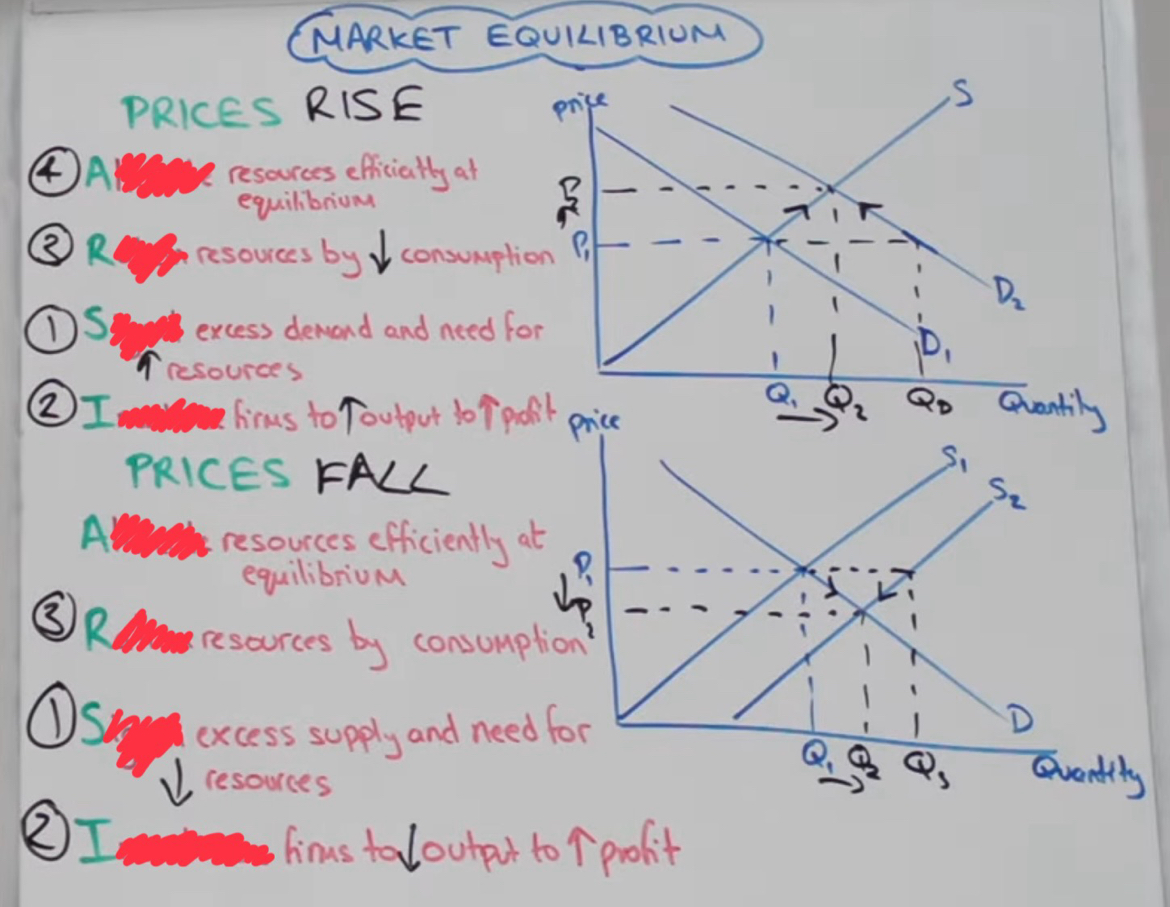
Producer surplus
Difference between the price producers are willing and able to supply a product for and the price they receive in the market
Consumer surplus
Difference between the price consumers are willing and able to pay for a product and the total amount they do pay
Producer and consumer surplus

Where do you find producer surplus on a diagram
The area above the supply curve and below the market pice
Where do you find consumer surplus on a diagram
The area below the demand curve and above the market price
Subsidy
A form of government support (mostly financial) offered to producers and occasionally consumers
Indirect tax
A tax imposed by the government that increases the supply costs for producers
Two types of indirect tax
Specific
Ad valorem
Ad valorem tax
A tax charged as a % of the price of a good e.g. VAT
Specific tax
A fixed amount of tax paid on each unit sold
Subsidy on a diagram
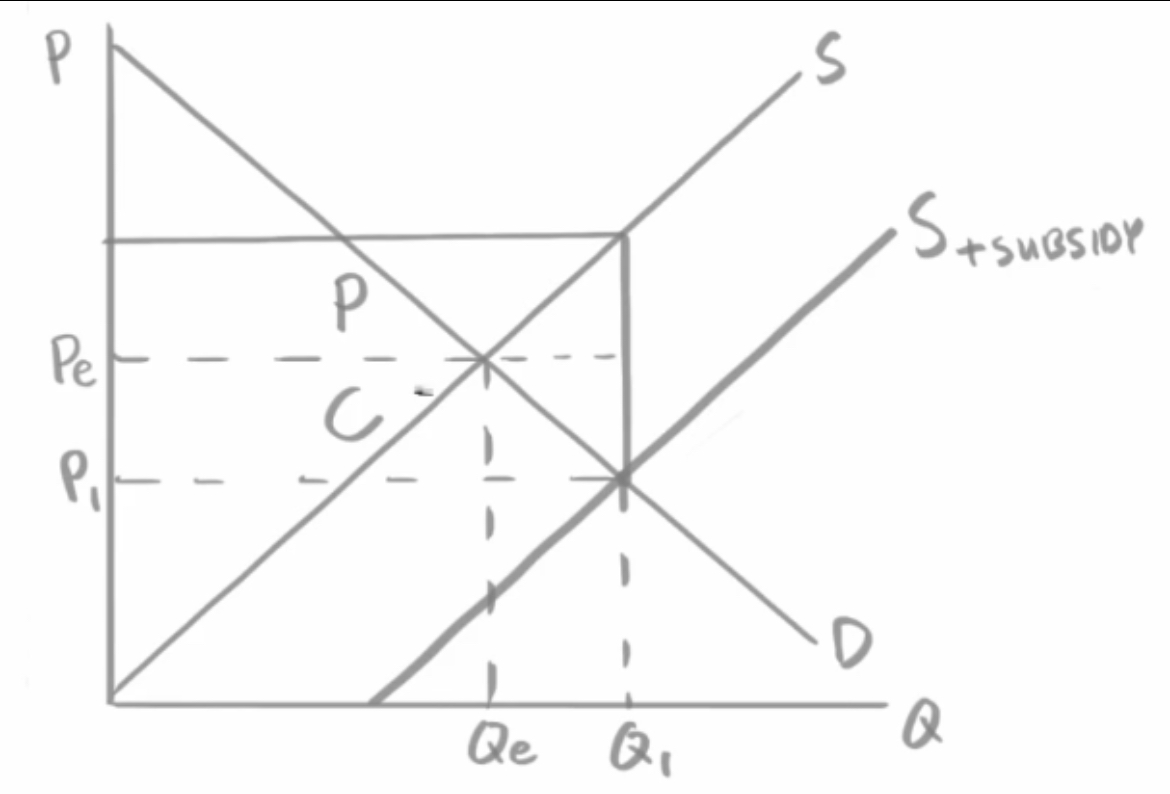
Ad valorem tax with inelastic demand
CB is bigger than PB because demand is more inelastic than supply, so producers pass on most of the tax to consumers through higher prices
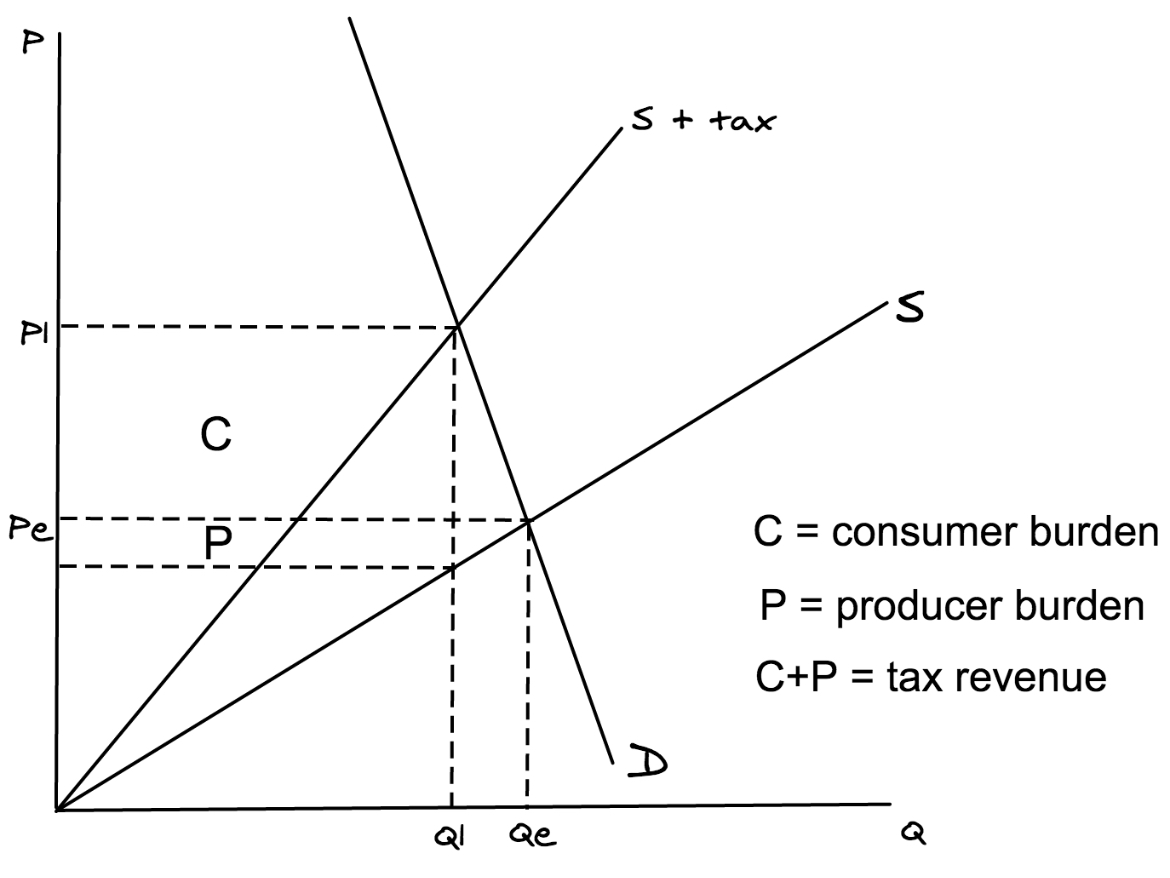
Ad valorem tax with elastic demand
CB is smaller than PB because demand is more elastic than supply, so producers can’t pass on too much of the tax onto consumers as they’ll lose to many sales
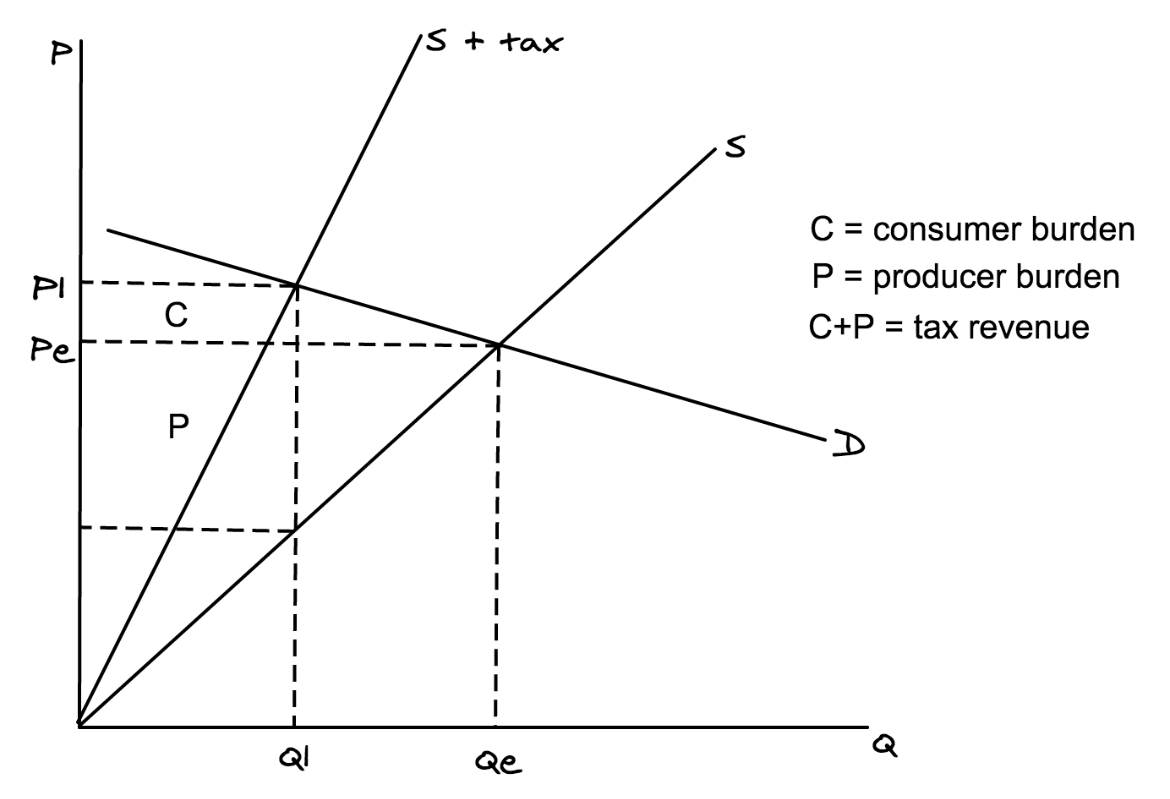
Specific tax on a diagram
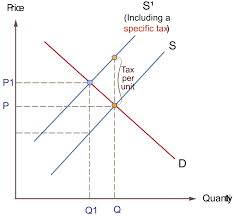
Regressive tax
Tax imposed by a government which takes a high % of income from those on low incomes